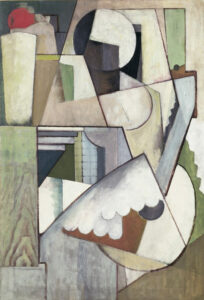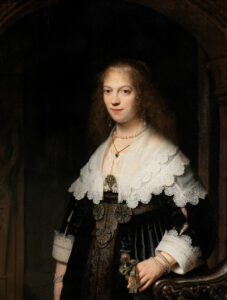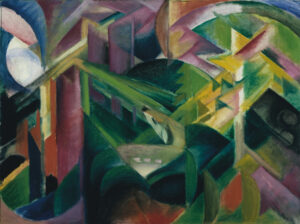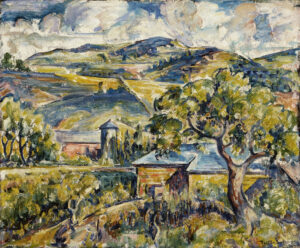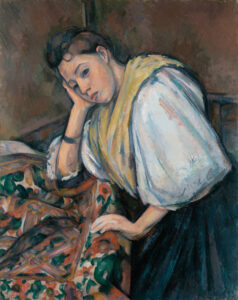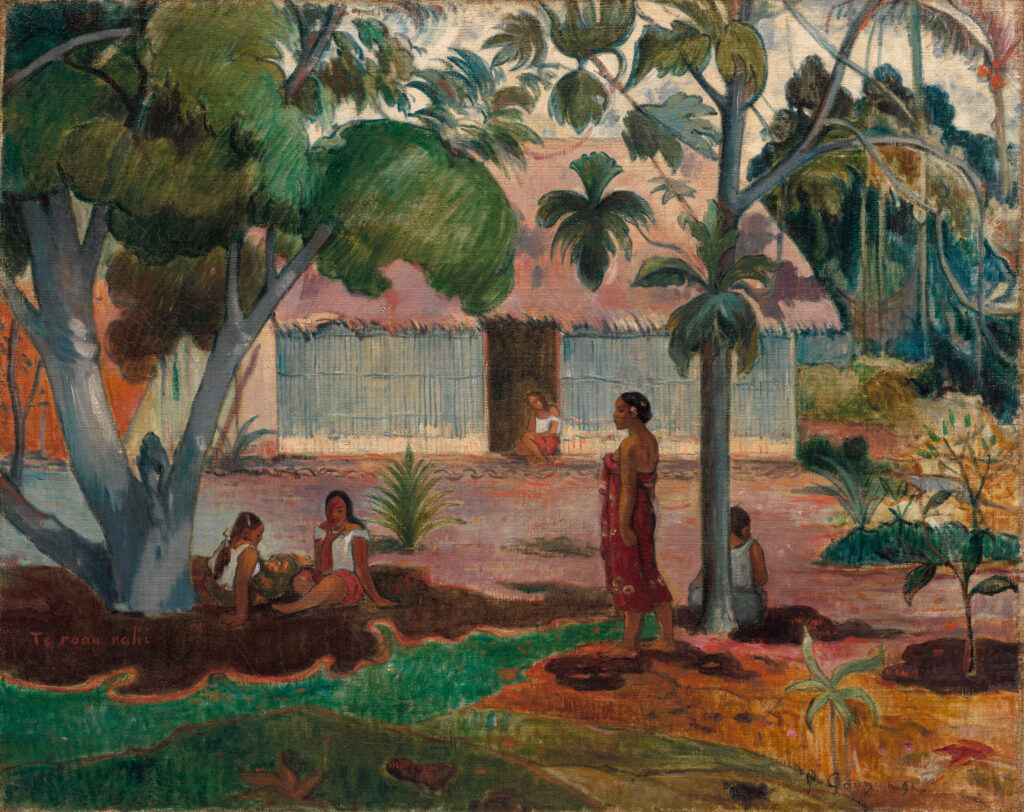
“The Large Tree” from 1891 testifies to the artistic revolution that Gauguin initiated upon his arrival in Polynesia.
This synthetist composition organizes space according to decorative logic where four female figures unfold beneath the protective foliage of a majestic tree. The artist abandons traditional perspective in favor of colorful cloisonnism: the deep greens of the foliage contrast with the pearlescent pinks of the thatched roof and the burnt ochres of the tropical ground. This arbitrary chromatic palette, freed from naturalistic constraints, transforms the everyday scene into a symbolic vision. The simplified forms and outlined contours reveal the influence of Japanese art and Breton popular imagery. Gauguin creates here a visual “symphony” where Tahitian reality becomes a pretext for seeking primitive harmony, far from Western conventions. This work inaugurates his quest for total art, a synthesis between direct observation and poetic idealization.
Further information
- The Large Tree, 1891, by Paul Gauguin
- 74 x 92.8 cm (29 1/8 x 36 9/16 in.)
- The Cleveland Museum of Art, not on display
- https://www.clevelandart.org/art/1975.263
Paul Gauguin (1848-1903) embodies the romantic figure of the artist in revolt against his era. A former prosperous stockbroker, he abandoned his Parisian bourgeois life in 1883 to devote himself entirely to painting. After his experimentations in Brittany where he developed Synthetism alongside Émile Bernard, Gauguin exiled himself to Tahiti in 1891, fleeing what he perceived as the decadence of Western civilization. Influenced by primitive art and Japanese prints, he revolutionized painting by privileging expression over imitation, pure color over traditional modeling. His Tahitian canvases, of which “The Large Tree” constitutes an early example, established a new pictorial language that would profoundly influence the 20th-century avant-garde, from Matisse to the German Expressionists.

